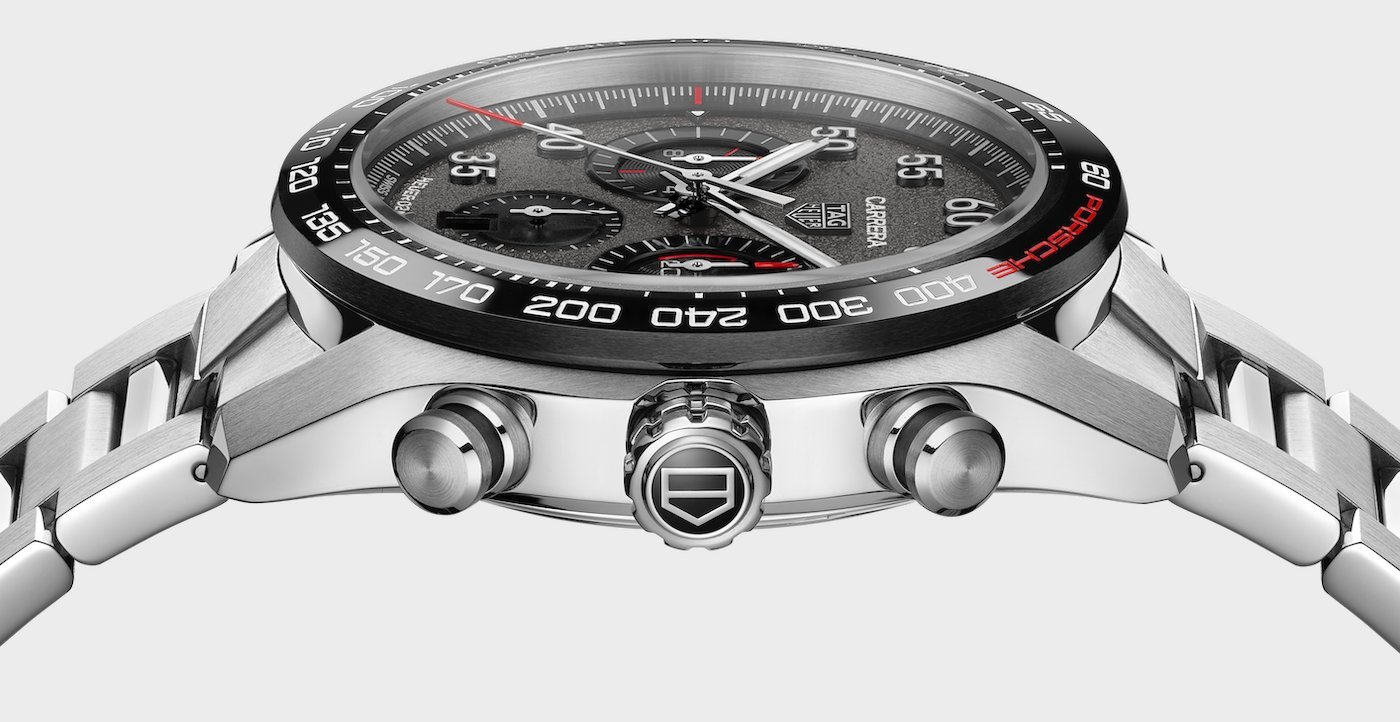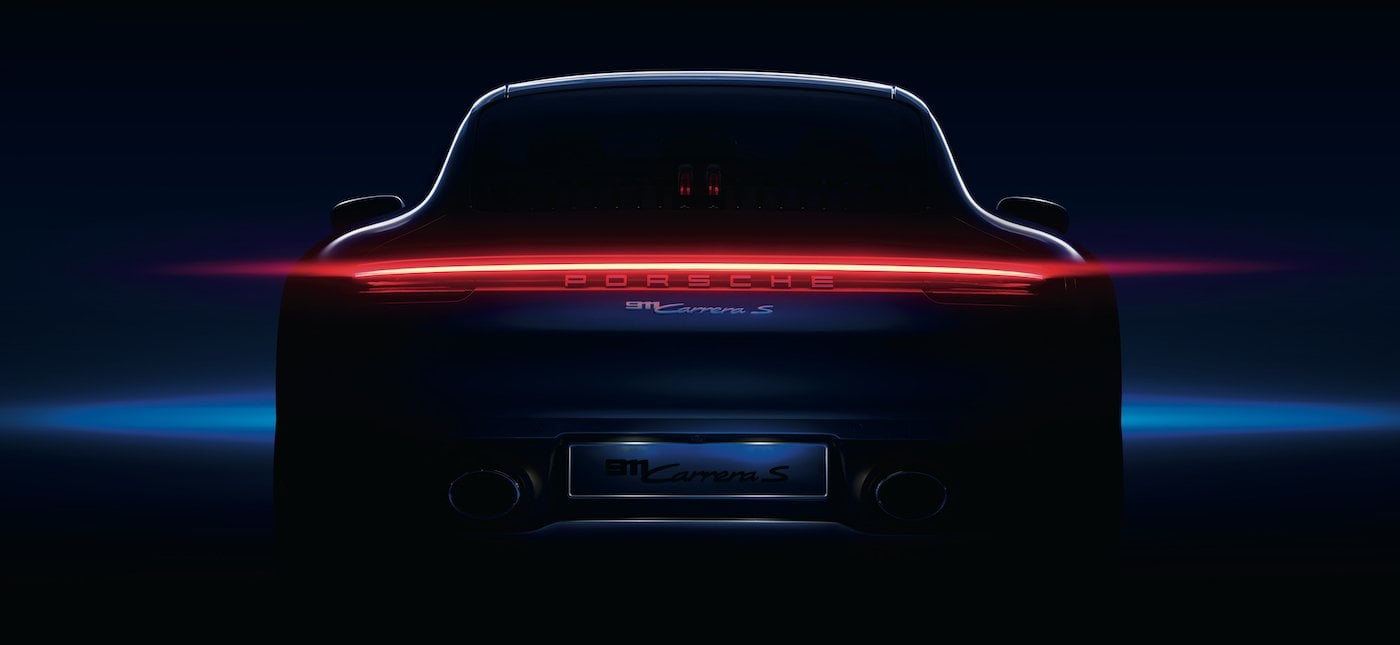he collaboration between TAG Heuer and Porsche, launched officially in February 2021, was described by the watch brand as “the most important partnership ever created between a car manufacturer and a watchmaker.” It’s an ambitious statement, particularly given the many alliances that have been forged and dismantled over the years between the two industries, and in view of this year’s bumper crop of partnerships (in addition to TAG Heuer’s announcement with Porsche, Richard Mille has joined forces with Ferrari and Girard-Perregaux with Aston Martin).
The alliance also gives the German car maker and its parent company Volkswagen access to luxury giant LVMH.
Some observers question the relevance for Porsche of allying itself with a watchmaker that represents only a fraction of the purchase price of its vehicles, or its turnover. Given that Porsche can already count on Porsche Design for watches, is this a one-way alliance? Not exactly. It’s worth remembering that it gives the German car maker and its parent company Volkswagen access to luxury giant LVMH. As well as being probably the most dynamic multinational outside the tech world in recent years, LVMH has just overtaken Nestlé as the company with Europe’s largest market capitalisation, at 271 billion euros. That helps to put things into perspective.
-

- The Heuer Carrera introduced in the autumn 1963 edition of Europa Star: “The smartness of an elegant wristwatch with the performance of a high-precision timekeeper.”
While there have been many shifting alliances between the watchmaking and automotive worlds, these two brands are also basing their partnership on a shared historical lineage. You can almost hear the sighs of relief from La Chaux-de-Fonds (or Eysins, currently): “This time, we’ve got it right.” The launch of the partnership was backed up by quantities of archival material illustrating the historic similarities between the two brands. This was the major project that new CEO Frédéric Arnault was waiting for, to give the brand a new direction. The new TAG Heuer Carrera Porsche Chronograph watch marks the activation of a partnership that intends to go far beyond a simple exchange of logos.
While there have been many shifting alliances between the watchmaking and automotive industries, the two brands are basing their partnership on a shared historical lineage.
-

- The partnership was launched with the TAG Heuer Carrera Porsche Chronograph, a special 44 mm edition equipped with the Heuer 02 Automatic Calibre.
It was up to Catherine Eberlé-Devaux, TAG Heuer’s former heritage director (who is still with LVMH, although she has moved to Bulgari), who was very active last year around the anniversary and the redesign of the Carrera line, to comb through the archives for concrete signs of the common “state of mind” being promoted. She was fortunate to also be gratend access to the extensive Porsche archives. We asked her about this research.
-

- Catherine Eberlé-Devaux, TAG Heuer’s former heritage director (now at Bulgari still in LVMH Group, editor’s note), has mobilised the brand’s resources, in collaboration with Porsche’s heritage teams, to trace the links between the two brands going back to their earliest days.
Europa Star: When launching the partnership, you placed a lot of emphasis on the “natural” link that has long united you with Porsche – so much so that some people actually thought that the Porsche 911 Carrera and the TAG Heuer Carrera were the result of a collaboration! Has this “myth” finally turned out for the best?
Catherine Eberlé-Devaux: This is a remark we hear very often, including from fans and collectors. Last year, with the anniversary of the Heuer Carrera model and the redesign of the collection, this type of comment became more common than ever! Both Porsche and TAG Heuer take the name of their flagship collection from the Carrera Panamericana race that took place in Mexico between 1950 and 1954 (the word ‘carrera’ means ‘race’ in Spanish). This historical proximity gives a certain legitimacy to our approach. But each brand has its own community of collectors, which the other will benefit from.
-

- In 1963, Jack Heuer was inspired by the famous Carrera Panamericana road race to name his new chronograph. It was also the name chosen by Porsche eight years earlier for the engine powering the sports version of its 356 model.
Beyond this shared name, what other historical elements are you basing this link on?
One figure in particular emerges: Swiss racing driver Jo Siffert, who raced for Porsche, and whom Steve McQueen admired more than anyone else. In 1969, to avoid a costly advertising campaign for the new Monaco, Jack Heuer struck a clever sponsorship deal with Jo Siffert, who was also a Porsche dealer. He agreed to display the Heuer logo on his car and his suit for CHF 25,000. In addition, he could buy watches at a discount and sell them to his driver friends at a profit... which he soon did, as half the F1 paddock was wearing Heuer watches by the end of the season.
-

- Considered one of the best racing drivers in history, Jo Siffert, born in 1936 in Fribourg, was an official Porsche driver and also a Porsche dealer. Jack Heuer reached out to him to promote the launch of his Carrera chronograph.
-

- A Heuer ad from a 1963 issue of Europa Star, for the recently launched Carrera: “A new concept in chronographs for the man of action.” The model was promoted on the motor racing circuit.
In fact, it was because of this connection that Steve McQueen wore the Heuer logo on his racing suit for the 1971 film Le Mans, in which he drove a Porsche 917. He said: “I drive the same car as Jo Siffert and I want to wear the same suit as him.”
-

- Steve McQueen was advised by Jo Siffert, whom he admired, on the set of “Le Mans” in 1971. The Swiss driver supplied him with several Porsches for the shoot, including some 908s and 911s that were made to look like competition models with the help of Franco Sbarro!
If we go back further, we can also find striking similarities in the origins of both brands. Ferdinand Porsche (1875-1951) worked on electric motors, while Edouard Heuer (1840-1892) worked on designing improvements to electric motors. This is significant, because they both injected a good dose of their personality into the brands they founded. They shared the same single-minded quest for technical improvement, combined with a sense of aesthetics.
Their successors were marked by the codes of their time: we can find advertisements that are quite similar graphically, including the name “Carrera” written in a similar font. The same care is taken to express a modern, pure message, along with the engineer’s touch. The product is explained simply and precisely, to make the advertisement look serious and technical. Both watches and cars are marketed with a similar mindset, targeting the motoring community of the 1960s.
“In fact, you can find advertisements that are quite similar graphically, including the name Carrera written in a similar font.”
-

- “There’s a James Dean on every road in the world.” As this article in Europa Star noted at the time, chronographs were very on-trend in 1963...
- Europa Star 1963
-

- ...including the brand new Carrera (left page, top right).
- Europa Star
There is another, more formal link: together, the brands developed and produced the TAG Porsche engine that helped the McLaren team win the Formula 1 world championship three years running: with Niki Lauda in 1984 and with Alain Prost in 1985 and 1986.
Closer to today, TAG Heuer was one of the founders of the Formula E championship, which helped put electric racing on the map. Porsche created its own Formula E team, with TAG Heuer as the title partner for timekeeping in 2019.

Did you work directly with Porsche’s heritage department on this research?
Yes, it was a very productive relationship for us. For example, we found both their and our photos of the same pitstops in certain races, taken from different angles. Our departments are structured quite differently but our exchanges were very inspiring.
“The heritage department was very much in demand last year when we redefined the entire Carrera collection. It was about rethinking the codes by going back to the designs of the 1960s, while combining them with the ceramic bezel introduced in the early 2000s.”
-

- The year 1986 marked the addition of “TAG” to “Heuer”, following the purchase of the watch brand by the TAG group, which was very active in F1 and, alongside Porsche, developed the turbo engines used in the McLaren team cars.
- Europa Star
Was your department directly involved in the design of the new TAG Heuer Carrera Porsche chronograph, the result of this collaboration, as a sort of historical “safeguard”?
Our documentary research work inspired our colleagues in the design and technology departments. Above all, the chronograph symbolises this moment in time. But it is not an end in itself; it’s just the first result of many more watches and joint initiatives to come.
The heritage department was very much in demand last year when the whole Carrera collection was redefined. It was about rethinking the codes by going back to the designs of the 1960s, while combining them with the ceramic bezel introduced in the early 2000s. We really brought everything up to date. This holistic approach made us far more comfortable incorporating the Porsche codes today. As for the use of the dial surface with an “asphalt” texture, I can only applaud it! It is still a TAG Heuer chronograph, with some subtle elements from Porsche. We were not going to print a big Porsche logo on the dial. We keep things subtle: for example, we use the same font as on a Porsche counter. The oscillating weight makes reference to a Porsche steering wheel. A connoisseur will appreciate these little design touches.

TAG Heuer has had several automotive partners in the past, most recently Aston Martin. How does this new partnership differ from previous ones?
The intentions are much more ambitious. For example, we are considering partnerships in terms of R&D, particularly with regard to movements, but also with a view to mounting joint exhibitions on our heritage. We have wanted to do this for a long time, and our CEO Frédéric Arnault has been able to bring the right level of collaboration. In our department, we work closely with our counterparts at Porsche around the archives. I don’t think there are many heritage directors in our industry who have this opportunity to go so deeply into a partnership with a non-watch brand.
“The intentions are much more ambitious than in previous collaborations. For example, we are considering partnerships in terms of R&D.”
























































